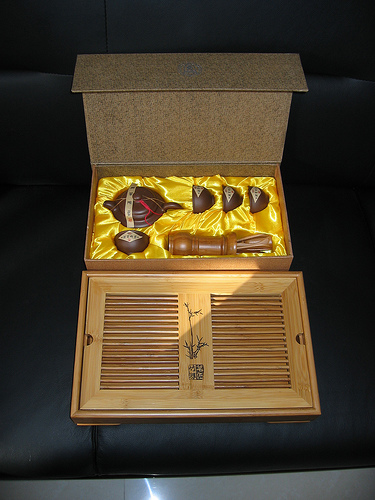William Rubel is the author of The Magic of Fire, about hearth cooking.
RUBEL I started to think, once I finished that book, I thought, ’well, this bread that I’ve been interested in for so long, I wonder if they ever wrote down how they made bread when they were still doing stone-ground flour and working the bread by hand at home or in the bakeries.’ And the answer is, really, that they had not written down with much precision. So my goal–another primary goal–is to find the lost part of the techniques that were not written down and revive them in a way that will provide inspiration for modern bakers.
A third idea is that I’ve certainly noticed that our current bread culture is exceedingly narrow. In other words, the artisan culture–the slow food breads that we all like–tend to be French breads that trace their lineage to France and the primary ingredient is flour, water, and salt and either yeast or leaven, which is a sourdough starter. And in this bread culture, the leaven starter is preferred. There’s also a preference for an irregular crumb–big holes on the inside of the bread but not a regular shape; some of them are big, some are small. We like the color to be little bit off-white, to be cream. We tend to like a crusty crust. It’s very specific. We tend to badmouth other breads like Wonder Bread as a garbage bread and fast-risen yeast breads or breads with soft crusts and soft interiors, we tend to feel that those are bad breads, that there’s a good bread which is that French-inspired one and these other ones are bad. But as an historian, I say that bread is an invention of human culture. There is no bread–farmers don’t farm breads, they farm grain. You could say that this is a perfect apple, an apple at peak ripeness, and you can measure the sugar content in the apple to know that it is at peak ripeness. But there is no ideal bread because bread is just an expression of human culture; it’s simply an invention. So once you start saying that something is good and bad, really you’re saying that this culture that produces that bread that you don’t like is bad. You are demeaning the people who like that bread.
In one way I’m thinking of using history books to comment on the present, much the way that historians in totalitarian states–like in Stalin’s Soviet Union–would write about Medieval Period and they could talk about problems there (and political problems in the Medieval Period), whereas they could not directly address similar problems in the modern state. I’m also using this work to critique our own values and value system when it comes to bread and hopefully help readers to see themselves in the story of bread and in the historical continuum of bread culture.
ROBERTS That’s what fascinates me the most. I think that everything about your history of bread is fascinating, but the last thing that you said is what fascinates me the most. Why don’t we turn to that now? When I’ve talked with you about the book, when you’ve been talking about the book, one point you made that I especially liked was about white bread and how white bread was seen and how we came to have white bread. Can you say a little about that?
RUBEL White bread is the starchy part; the white flour is the starchy part of the grain called the endosperm. The way you got that historically, before the invention of modern roller mills (steel mills with steel rollers in the 19th century), was that you ground the grain between stones and then you sift it. Before agriculture was invented, the hunters and gatherers who had settled in the Fertile Crescent around the big fields of grain had stone scythes and they had grindstones. The archaeological sites are littered, when you look at drawings of archaeological sites of the hunter-gatherers–we’re talking 13,000-15,000 years ago in the Fertile Crescent–these sites are just littered with grindstones. Metates: we think of Mexican women grinding the corn to make the tortillas, grinding the boiled corn they mixed _____ to make Tamasa.
It was certainly possible for people to have ground grain–we don’t know that they did–it was certainly possible that grain was being ground a very, very long time ago. Once you have ground grain, separating out the white part–the powdered part–is fairly easy. Whether people did it, we don’t know, but certainly if you can make a sieve and if they could make a basket, if they could make cloth, then they could make sieves. You can go to the Metropolitan Museum of Art and in their Egyptian room they have a storehouse of linen cloths–bolts and bolts of the finest linen cloths you can imagine. Anyone with fine linen cloth can make the very, very fine white flour.
ROBERTS Because you can use the linen as a filter?
RUBEL You’d sift it; that’s what they’d use. They would use linen or they would use silk. Until nylon bolting cloths were developed, silk was the highest grade bolting cloth. But anything you can weave–horsehair (they had horses in Mesopotamia), a horsehair sieve–you can sift. Remember, you’re talking about a high status product, so you’ve got lots of slaves. You also could just shake and blow; you don’t even need to sift. You can certainly make a whiter flour than a whole wheat flour just by shaking a bowl of it and the finer particles will fall and the courser particles will rise to the top. If you take fine sand and course sand and just shake, the fine will go one direction and the course sand will go another.
Part 1.
